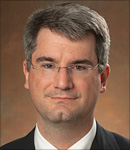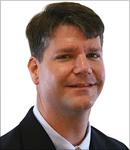Much has been written about the role of distributed energy resources (DER),1 smart meters and other grid connected devices, but the next revolution for the smart grid comes from the utilization of advanced analytics and interoperability. These analytics-based capabilities are enabled when information and telecommunications technology is fully integrated into the electric grid’s DNA. This convergence between operational and information technology has already begun – several key companies are working towards developing these capabilities.2 However, there are three critical barriers that impede our ability to achieve these outcomes, including:
- Incorporating a common language required by many applications in order the connect.
- Making data secure and available to enable analytics whenever and wherever necessary
- Optimizing centrally-managed systems with distributed problem-solving so our grid can operate more resiliently, quickly, and efficiently.
Overcoming these hurdles should create a more open, secure, interoperable grid that can handle significantly more distributed energy resources and microgrids while improving reliability and reducing costs relative to today’s existing technology.
Creating an Open Playing Field
Computer scientists refer to middleware as software that enables coordination, communication and data sharing among applications and between vendor products. Now data from different vendor applications may be unlocked using a common, standards-based solution such as a field message bus. Advances in open field message bus standards enables utilities to more easily link together DER, smart meters and other distribution automation assets and enable advanced analytical capabilities.
Making Data Securely Available
Today, many electric utility applications backhaul data generated by one set of vendors to a centralized point and push it through middleware from another vendor to ‘unlock’ the information for use by applications3 from yet more vendors. Unfortunately, this process is both expensive and time-consuming. Additionally, this introduces a single point of failure (the centralized software) and permits vendor lock-in since technology can be proprietary until it reaches the middleware. By also placing distributed publish-subscribe middleware at the edge of the network, grid-based applications can enhance resiliency by eliminating the single point of failure. Placing middleware at the edge can also break down the barriers of proprietary technology by unlocking data from all vendors also at the edge of the network. Furthermore, this solution permits a more secure, resilient grid by allowing a utility to install new, distributed analytical tools throughout the network to manage and monitor the security and operational functions of the grid.
Enhancing and Augmenting Centralized Systems
Middleware is typically installed at the core of the network because this is where most of the decision-making software currently resides. As previously mentioned, such a design requires all data to be backhauled to a centralized point in order to make a decision. Yet, backhauling all data is an inherently slow, cumbersome, and an expensive process. To make matters more challenging, one of today’s fastest growing technologies on the grid, DER, may not be able to rely on centralized systems due to their need for extremely quick decision-making. A fully centralized management system cannot provide the required performance at the desired cost because they are inherently slow. Implementing distributed or layered intelligence pushes certain decision-making functions to the edge of the network in order to improve response times and reduce costs. A hybrid of a centralized and distributed architecture can enable the performance and decision making capabilities needed by utilities, by unlocking data and systems at the edge of the network, and by allowing new DER and microgrid management tools to make rapid decisions in coordination with the utility’s existing centralized management tools. A related and emerging approach is what is referred to as an ‘Open Application Platform.’4 The open application concept is easily explained through an analogy using a familiar device – the smart phone. Mobile devices were once limited in functionality by their firmware, as they were simply unable to run applications. By adding a framework and support for applications, smart phones are now thriving platforms for third-party development. Additions in functionality no longer require a firmware upgrade. Rather than being limited to a fixed set of capabilities for the life of the device, a smart phone user can tailor the product to their individual needs and update product functionality as those needs evolve. Third-parties can bring new capabilities without involving the manufacturer or updating the device firmware.
How CPS Energy is Leading the Charge
CPS Energy serves the greater San Antonio, TX, region and is one of the nation’s largest municipally-owned, vertically-integrated electric and gas utilities. While CPS Energy is currently a leader in demand response5 and renewables,6 it is actively partnering with organizations such as the National Renewable Energy Laboratory (NREL), the Electric Power Research Institute (EPRI), and Duke Energy to test and deploy the next generation of smart grid interoperability and analytical capabilities. To deliver these benefits, CPS Energy will implement standards-based technologies in its ‘Grid-of-the-Future’ deployment area in San Antonio, demonstrating benefits for customers, interoperability, and new analytical capabilities.
Enabling Future Analytical Capabilities
As utilities and vendors embrace utilizing an open-source, standards-based, publish-subscribe middleware platform, new analytical functions can be developed to create micro-forecasts of supply and demand, to detect theft, to enhance the safety of the grid, to monitor vegetation, and to manage distributed intermittent resources. Today, these solutions are proprietary, slow, and costly. Yet, by adopting some readily-available technology, we can more easily implement additional DER’s and microgrids at cost and performance targets that currently seem unachievable. Long ago, information technology evolved from centralized-systems (mainframe computers) to a distributed architecture (tablets and laptop computers as well as cloud-computing). Similarly, telecommunications adapted to this paradigm, shifting from land-line phones and centralized, analog switching to digital, distributed infrastructure and smart phones. Isn’t it time the utility industry caught up?
Workshop to Explore End-to-End Interoperability and New Platform
CPS Energy, Duke Energy, EPRI and NREL are hosting an open industry workshop 7 on Wednesday, April 1, in San Antonio to explore the most impactful R&D related to end-to-end interoperability for the electric sectors – solutions that could take anywhere from six months to three years to accomplish. On the table will be five topics for further discussion including: Open Field Message Bus (OpenFMB), Enterprise Architecture, Communications Architectures, Open Application Platforms, and Cyber Security Architecture.
With the rapid pace of change of information, communication and cyber security technologies, it is important to bring all stakeholders together to understand the evolving electric industry needs and emerging technology innovations to prioritize R&D necessary to achieve End to End Interoperability for the grid. The partnership between CPS, Duke, EPRI and NREL aims to achieve that goal.
About the Authors
 Raiford Smith is Vice President of Corporate Development and Planning with CPS Energy in San Antonio, TX. He has 24 years of diverse experience in the utility industry, is a licensed North Carolina attorney, and has a BS in Computer Science from the Univ. of Georgia, an MBA from the University of Virginia, and a JD from the Charlotte School of Law.
Raiford Smith is Vice President of Corporate Development and Planning with CPS Energy in San Antonio, TX. He has 24 years of diverse experience in the utility industry, is a licensed North Carolina attorney, and has a BS in Computer Science from the Univ. of Georgia, an MBA from the University of Virginia, and a JD from the Charlotte School of Law.
 Matt Wakefield is Director of Information, Communication & Cyber Security at the Electric Power Research Institute. He has more than 25 years of experience in the electric industry and his responsibilities include furthering the development of a modernized grid through application of standards, communication technology, integration, and cyber security.
Matt Wakefield is Director of Information, Communication & Cyber Security at the Electric Power Research Institute. He has more than 25 years of experience in the electric industry and his responsibilities include furthering the development of a modernized grid through application of standards, communication technology, integration, and cyber security.
 Stuart Laval is a Manager of Technology Development in Duke Energy’s Emerging Technology office, where he leads the open field message bus (OpenFMB) reference architecture and its smart grid interoperability platform. Additionally, he has spent over 10 years at manufacturers of utility equipment, cellular radios, and power semiconductors. Mr. Laval holds Bachelors and Masters degrees in Electrical Engineering & Computer Science from MIT and a MBA from Rollins College.
Stuart Laval is a Manager of Technology Development in Duke Energy’s Emerging Technology office, where he leads the open field message bus (OpenFMB) reference architecture and its smart grid interoperability platform. Additionally, he has spent over 10 years at manufacturers of utility equipment, cellular radios, and power semiconductors. Mr. Laval holds Bachelors and Masters degrees in Electrical Engineering & Computer Science from MIT and a MBA from Rollins College.
References
1 Distributed Energy Resources (DERs) include roof-top photovoltaics (PV), battery storage, smart appliances, plug-in electric vehicles (PEV), microgrids, and advanced demand response tools
2 Duke Energy’s Coalition of the Willing project as demonstrated at DistribuTECH 2014 as well as NREL’s request for proposal to demonstrate open-source, standards-based, interoperable platforms that can integrate renewable energy sources. http://www.greentechmedia.com/articles/read/duke-energy-and-the-coalition-of-the-willing
3 Centralized functions such as a billing system, outage management system (OMS), or distribution management system (DMS).
4 EPRI, “Transforming Smart Grid Devices into Open Application Platforms,” 3002002859, July 2014, http://www.epri.com/abstracts/Pages/ProductAbstract.aspx?productid=000000003002002859
5 “With Strain on Electric Grid, a Push to Prioritize Conservation” at http://www.nytimes.com/2014/01/24/us/with-strain-on-electric-grid-a-push-to-prioritize-conservation.html?_r=0
6 “CPS Energy Recognized for Renewable Energy Progress, Customer Service as New Energy Economy Thrives” at http://www.marketwatch.com/story/cps-energy-recognized-for-renewable-energy-progress-customer-service-as-new-energy-economy-thrives-2015-01-14
7 Open Industry Workshop Summary: http://www.cvent.com/d/kx1SOhFhiUK2r_s7M2uvkg/snh9/P1?







